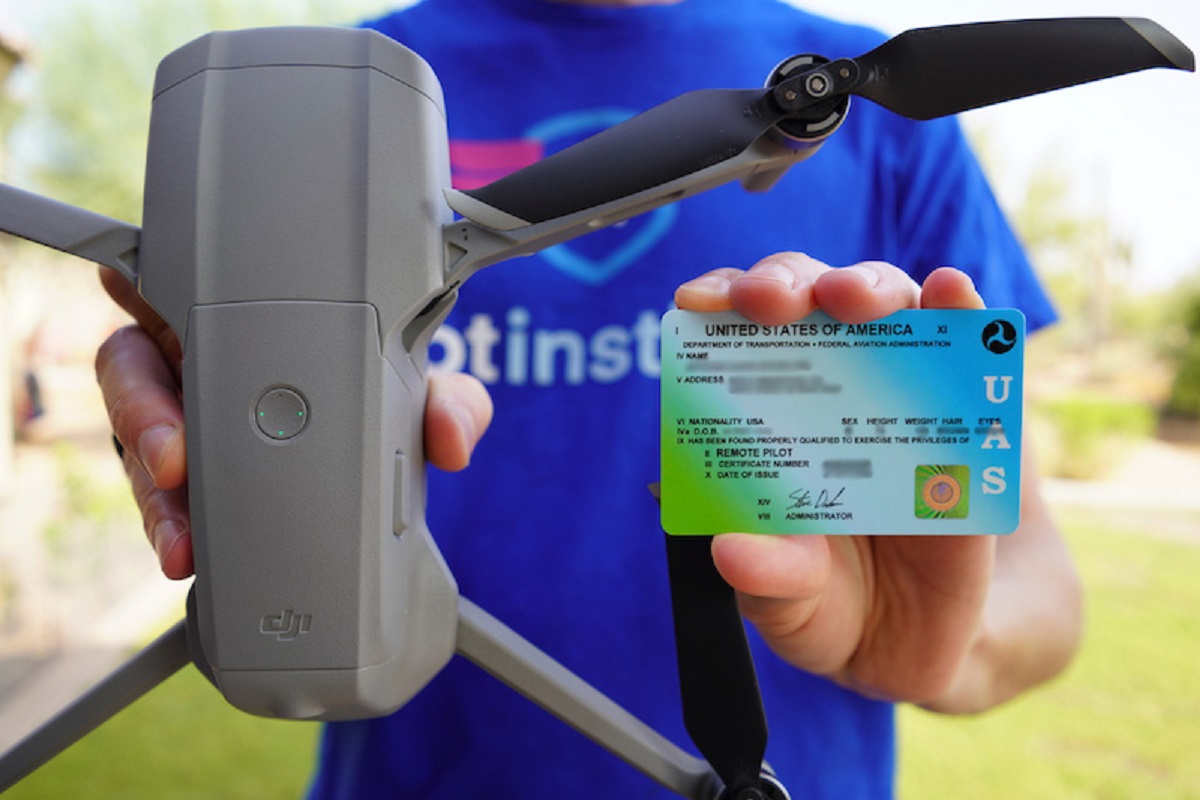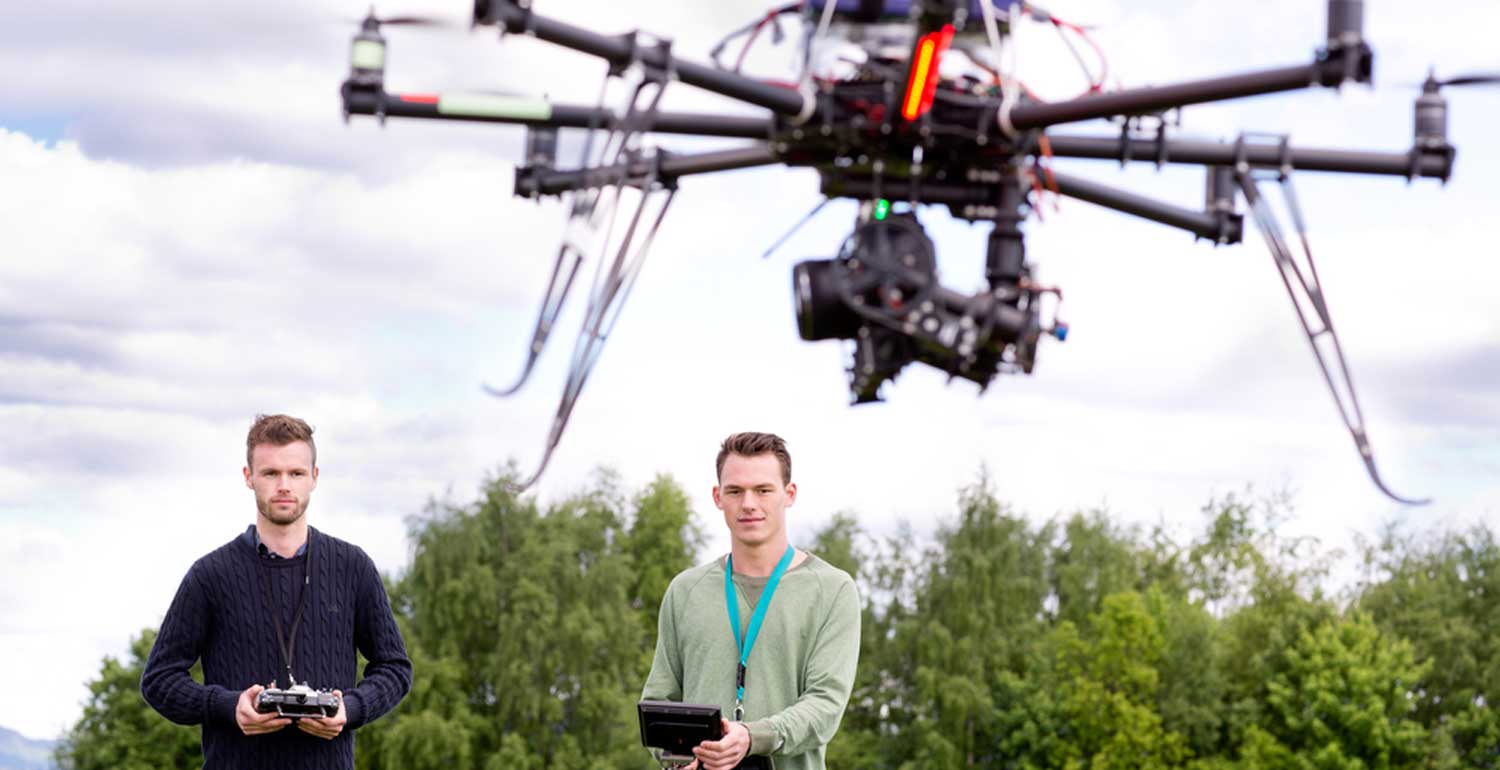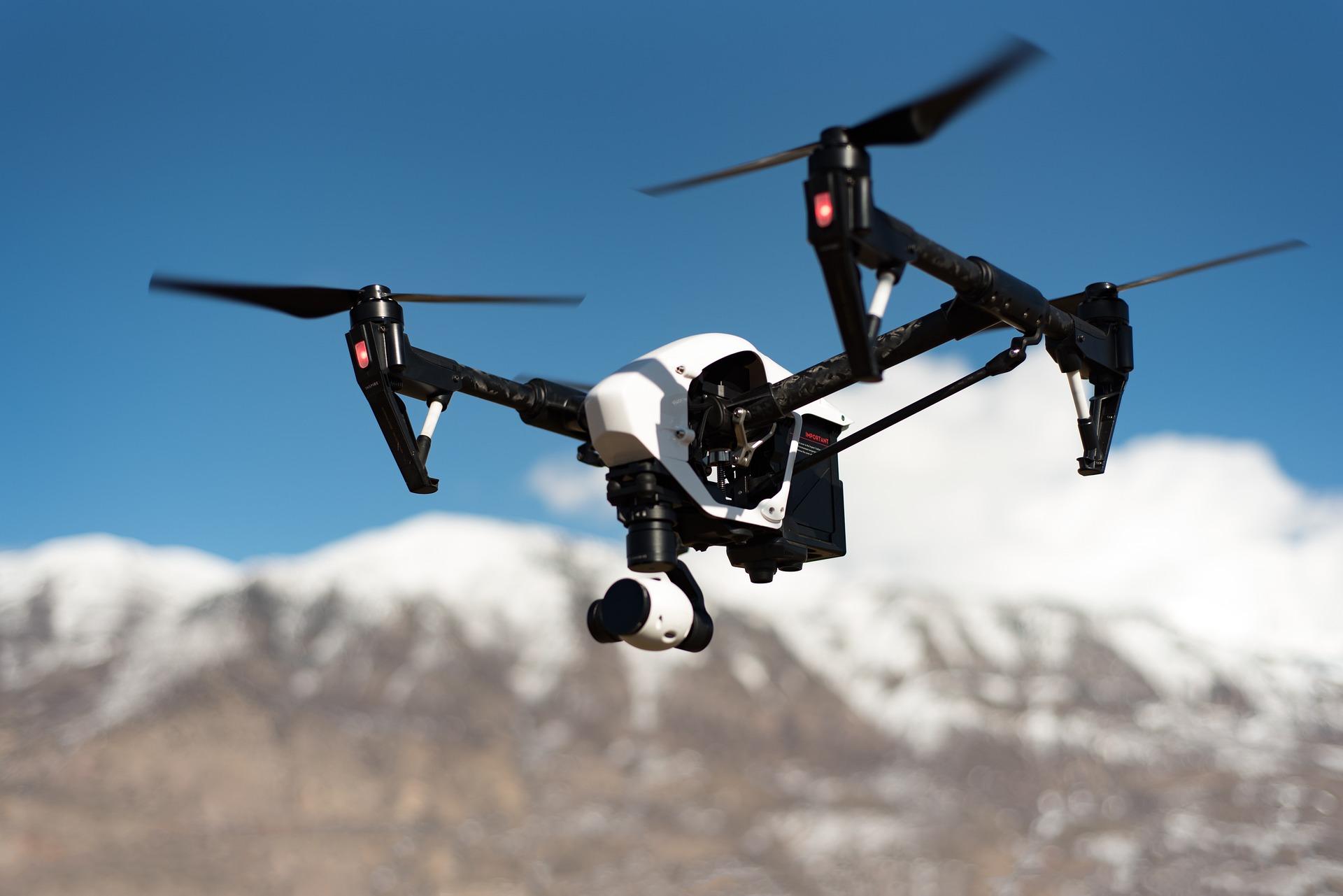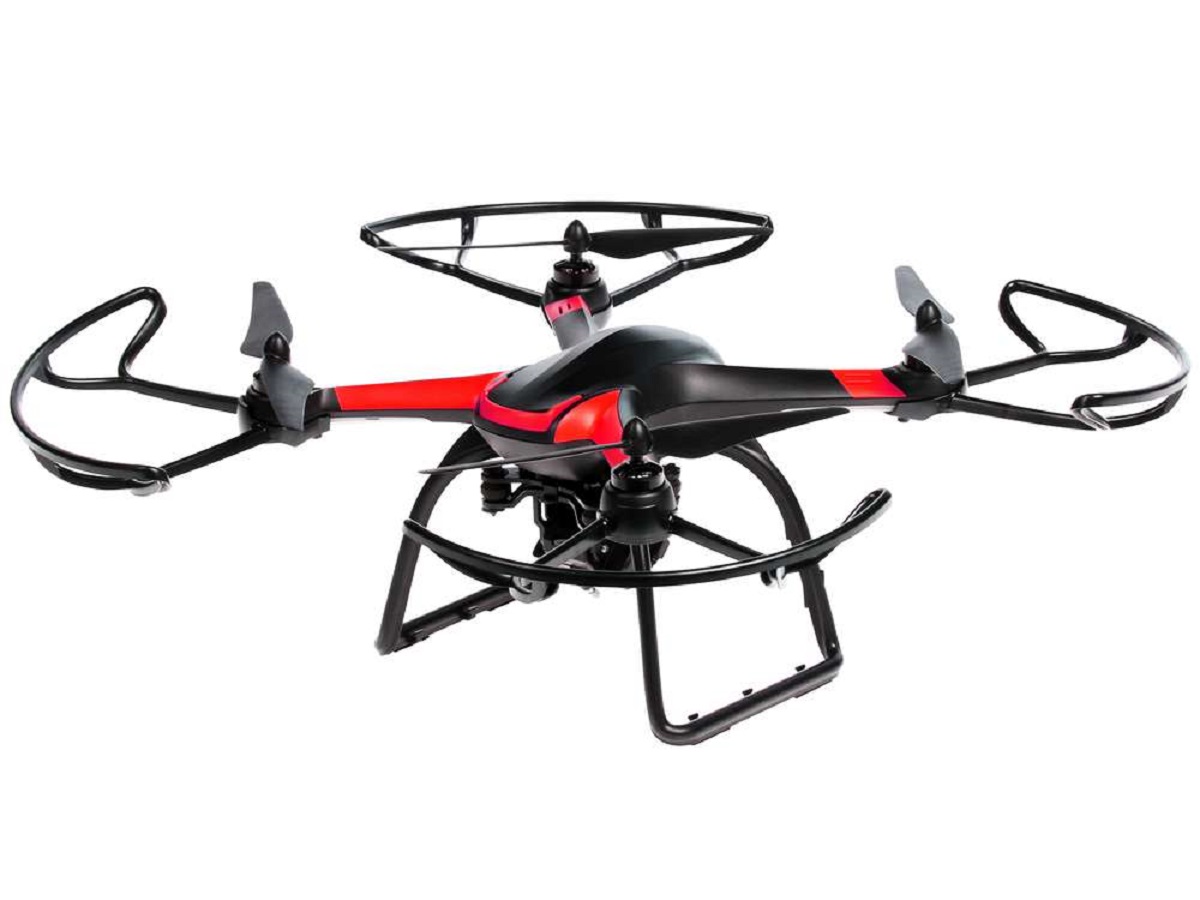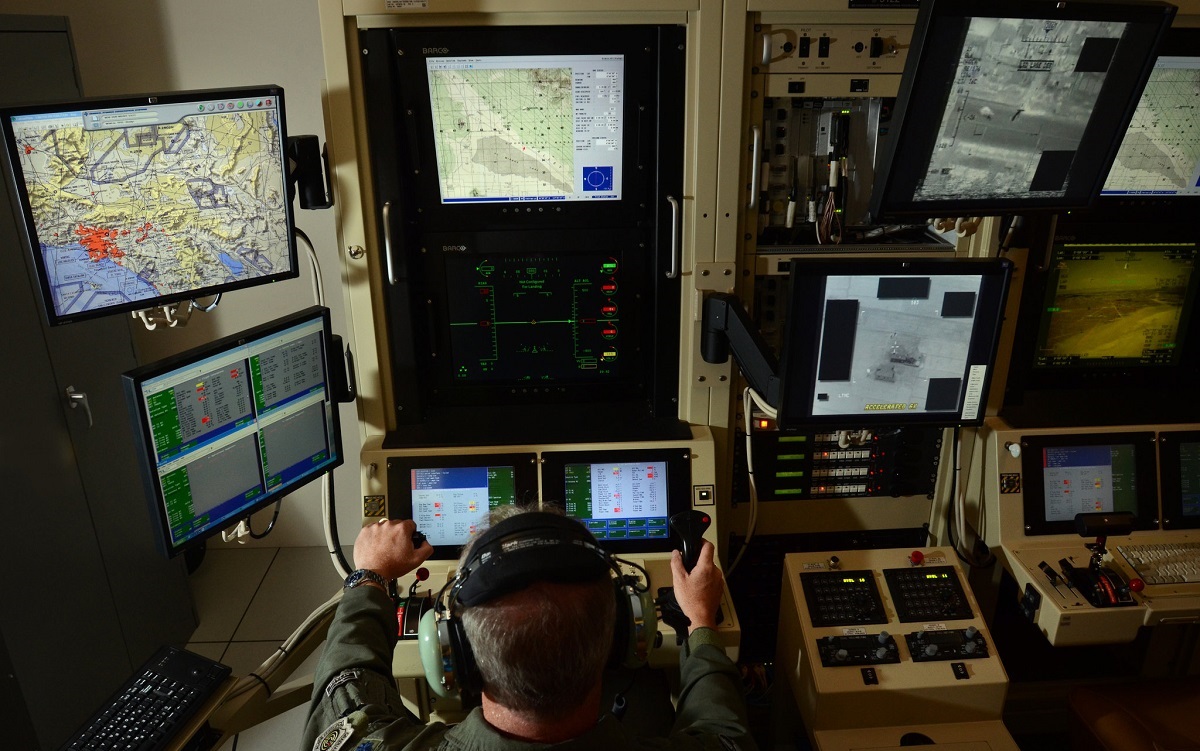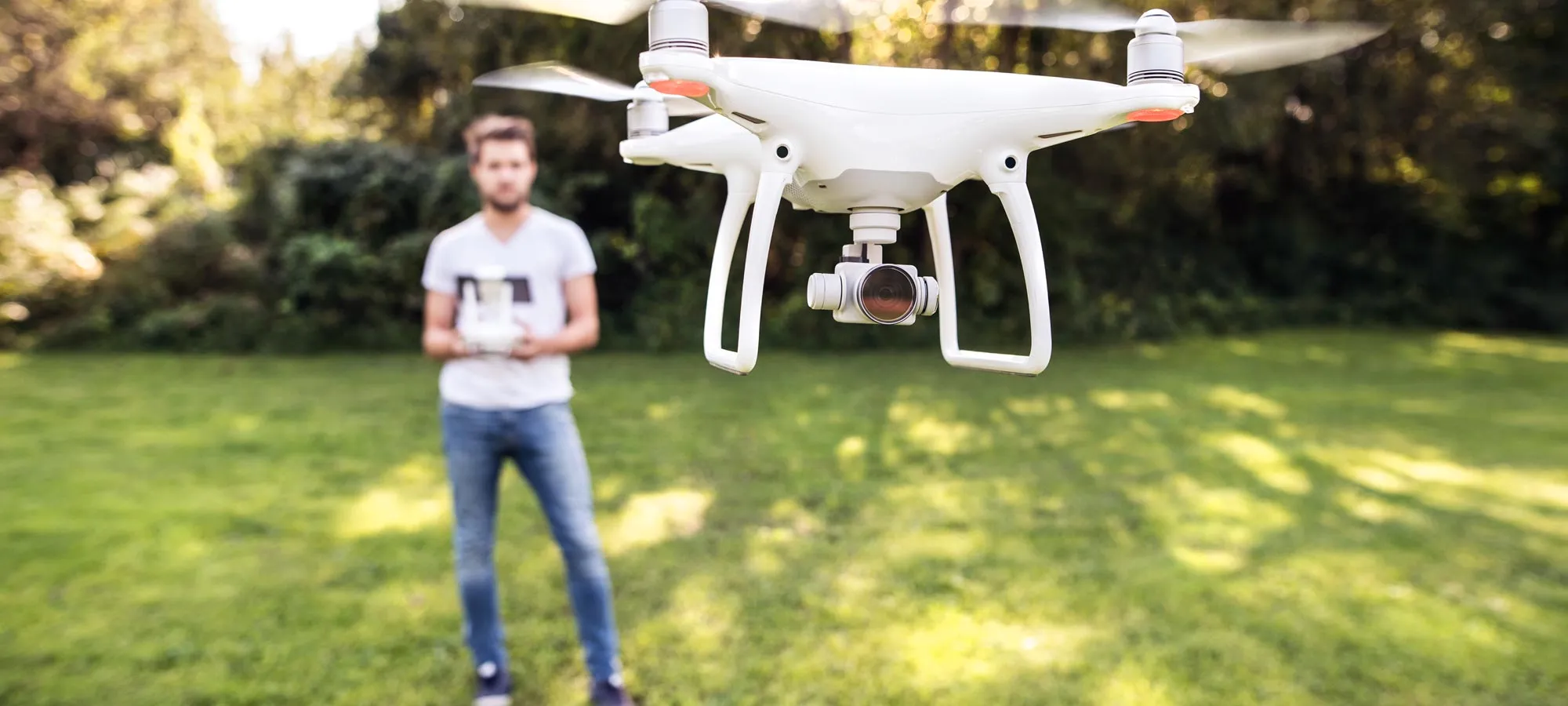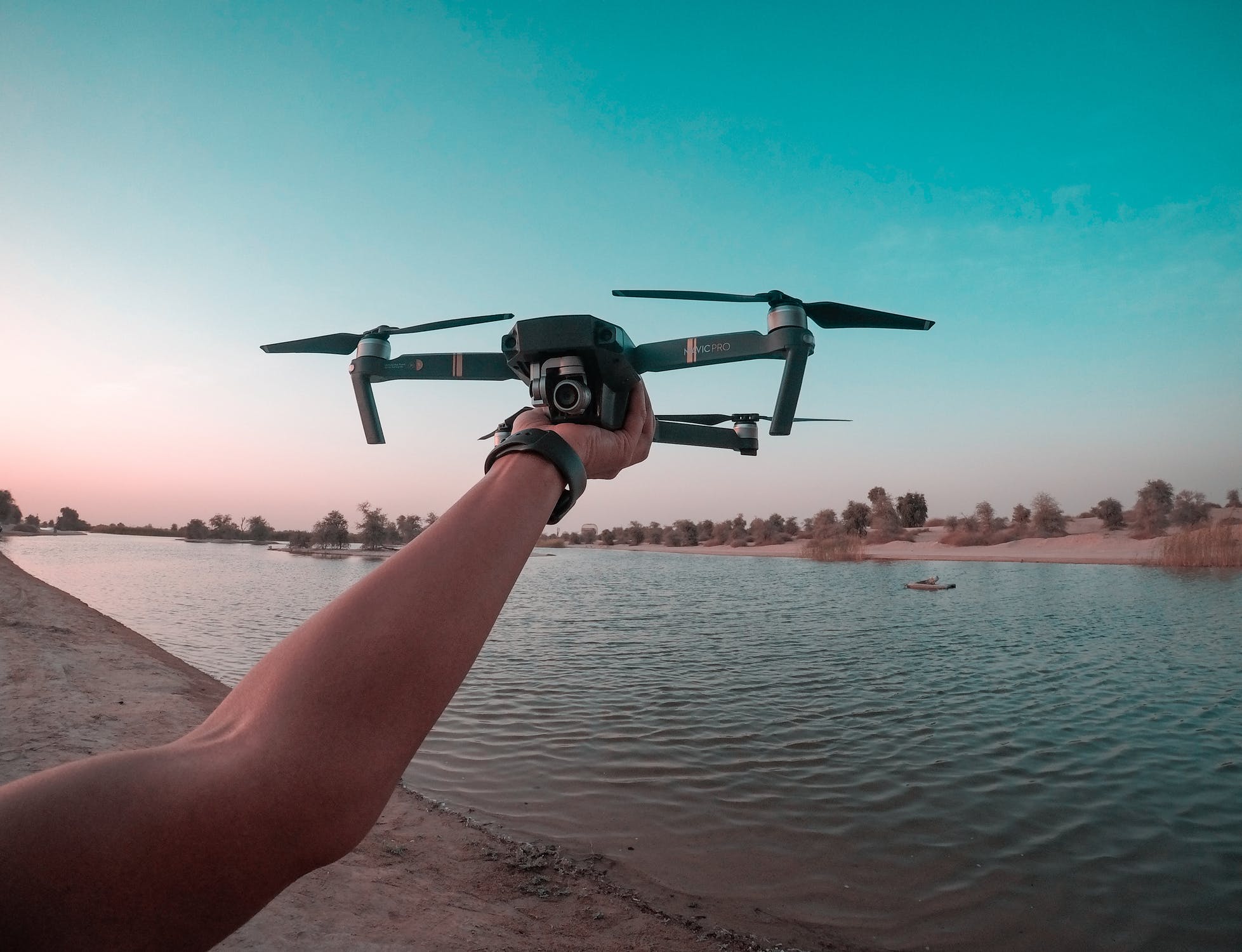Introduction
Welcome to the exciting world of Unmanned Aerial Systems (UAS) drones! Over the past decade, drones have gained significant popularity and have become an integral part of various industries and hobbies. These unmanned aircraft have revolutionized the way we capture aerial footage, perform inspections in inaccessible areas, and even deliver packages.
A UAS drone is a technologically advanced and autonomous aircraft that is operated without a human onboard. It is controlled by a remote pilot on the ground or can be programmed to fly autonomously using pre-defined routes and instructions. These versatile machines are equipped with sensors, cameras, and other specialized equipment that allow them to perform a wide range of tasks.
With their ability to hover in the air, move swiftly, and capture breathtaking aerial views, UAS drones have become a game-changer in many industries. Whether it’s for photography and videography, agriculture, construction, search and rescue operations, or even recreational activities, drones offer a fresh perspective and endless possibilities.
In this article, we will delve deeper into the world of UAS drones. We will explore their various components, different types available, applications across multiple industries, regulations for flying, as well as the advantages and disadvantages they bring. So fasten your seatbelts (metaphorically speaking, of course!) as we take flight into the world of UAS drones!
Definition of UAS Drone
Before we dive into the intricacies of UAS drones, let’s begin with a clear understanding of what they actually are. A UAS drone, also known as an Unmanned Aerial System drone, is an aircraft that operates without a human pilot onboard. These drones are controlled remotely by a human operator or can fly autonomously using pre-programmed instructions.
The term “UAS” is often used interchangeably with “drone,” but it encompasses more than just the aircraft itself. A UAS drone consists of three main components: the unmanned aircraft, a ground control station, and the communication link between these two components. The ground control station allows the operator to monitor the drone’s flight and control its movements.
UAS drones come in various sizes, from small quadcopters to larger fixed-wing aircraft. They are equipped with advanced technology and sensors that enable them to perform a wide range of tasks. These tasks can include aerial photography and videography, surveying and mapping, agricultural monitoring, infrastructure inspections, wildlife management, and much more.
One key feature of UAS drones is their ability to hover in one place or fly in precise patterns, capturing high-resolution imagery or collecting data from different angles. This flexibility and maneuverability make them ideal for tasks that would otherwise be time-consuming, costly, or risky for humans to perform.
It is important to note that UAS drones have gained popularity not only among professionals in various industries but also among hobbyists and enthusiasts. Many recreational drones are available at affordable prices, allowing individuals to explore the world of aerial photography and have fun flying them.
The advancements in UAS drone technology have made them more accessible and user-friendly, even for those without extensive aviation knowledge. However, it is crucial to familiarize oneself with the rules and regulations governing the use of UAS drones to ensure safe and responsible flying.
In the next section, we will take a closer look at the components that make up a UAS drone and how they work together to enable its operation.
Components of a UAS Drone
A UAS drone consists of several key components that work together to ensure its proper functioning and control. Understanding these components is essential for operating and maintaining a UAS drone effectively. Let’s take a closer look at each of these components:
- Unmanned Aircraft: The unmanned aircraft is the physical body of the drone and serves as its flying platform. It can vary in shape, size, and design, depending on the intended use of the drone. Common types of unmanned aircraft include multirotors, fixed-wing drones, and hybrid designs. The unmanned aircraft typically houses the propulsion system, sensors, cameras, and other necessary equipment required for flight.
- Flight Controller: The flight controller is the brain of the UAS drone. It is the electronic component that manages the drone’s movements and behavior. It receives inputs from the operator or pre-programmed instructions and sends commands to the motors to control the drone’s altitude, orientation, and speed. The flight controller also adjusts the drone’s stability and compensates for external factors such as wind.
- Sensors and Cameras: UAS drones are equipped with various sensors and cameras that enable them to capture data and gather information during flight. These sensors can include GPS (Global Positioning System) modules for precise positioning, altimeters for altitude measurement, gyroscopes and accelerometers for stability control, and obstacle detection sensors for collision avoidance. The cameras can range from basic onboard cameras for photography to advanced sensors for aerial mapping or thermal imaging.
- Communication System: The communication system allows for real-time interaction between the ground control station and the drone. It typically utilizes radio frequencies or wireless connections to transmit commands and receive telemetry data, including battery levels, GPS coordinates, and flight status. A reliable and robust communication system is vital for maintaining a stable connection and ensuring accurate control of the drone.
- Battery and Power System: UAS drones rely on batteries as their primary power source. The battery supplies the necessary energy to the motors, flight controller, sensors, and other electronic components. The battery capacity determines the flight duration, and it is essential to choose a battery suitable for the drone’s weight and power requirements. Some advanced drones may also have additional power systems, such as backup batteries or fuel cells, for extended flight capabilities.
- Ground Control Station: The ground control station is the interface that allows the drone operator to monitor and control the drone. It consists of a remote controller or a computer system with specialized software. The ground control station provides live video feeds from the drone’s cameras, flight data, and telemetry information. It also allows the operator to set flight parameters, plan routes, and adjust the drone’s settings.
These components work in harmony to enable the flight, control, and data capture capabilities of a UAS drone. Understanding the role and function of each component is crucial for safe and efficient operation. In the next section, we will explore the different types of UAS drones available in the market.
Types of UAS Drones
UAS drones come in a variety of types, each designed for specific purposes and applications. The different types of UAS drones offer unique capabilities and features that cater to diverse industries and user requirements. Let’s explore some of the most common types of UAS drones:
- Multirotor Drones: Multirotor drones, such as quadcopters and hexacopters, are one of the most popular types of UAS drones. They are characterized by multiple rotors arranged in a symmetrical pattern, which provide stability and maneuverability. Multirotor drones are commonly used for aerial photography, videography, surveillance, and inspections in urban environments or confined spaces where agility and stability are essential.
- Fixed-wing Drones: Fixed-wing drones resemble traditional airplanes and are designed with a fixed wing structure. Unlike multirotor drones, fixed-wing drones require a runway or launching mechanism to take off and land. They are ideal for long-range missions, mapping large areas, and conducting aerial surveys. Fixed-wing drones have the advantage of covering more ground efficiently and are commonly used in agriculture, topography, and environmental monitoring.
- Hybrid Drones: Hybrid drones combine the features of both multirotor and fixed-wing drones. They have the ability to take off and land vertically like multirotors, but can also transition into forward flight for longer endurance and greater range, similar to fixed-wing drones. Hybrid drones offer versatility and are suitable for applications that require both vertical takeoff and landing capabilities and efficient long-range flights.
- Nano Drones: Nano drones are compact and lightweight, often measuring a few inches in size. They are highly portable and can be easily carried in a pocket or backpack. Nano drones are popular among hobbyists and enthusiasts due to their agility and fun flight characteristics. While they may lack advanced features, nano drones are perfect for recreational flying and learning the basics of drone piloting.
- Professional/Commercial Drones: Professional or commercial drones are designed for advanced applications and high-end performance. These drones usually feature superior cameras, longer flight times, and more robust construction. They are commonly used in industries such as filmmaking, construction, infrastructure inspections, and search and rescue operations, where precision, durability, and professional-grade capabilities are paramount.
- Racing Drones: Racing drones are specifically designed for competitive racing events. They are built for speed and agility, with lightweight frames and powerful motors. Racing drones often come with first-person view (FPV) systems, allowing pilots to immerse themselves in the racing experience through live video feeds. These drones require advanced piloting skills and are popular among drone racing enthusiasts.
These are just a few examples of the many types of UAS drones available in the market. Each type offers unique advantages and features that cater to specific needs and preferences. When choosing a UAS drone, it’s crucial to consider its intended application, flight capabilities, camera quality, battery life, and overall performance to ensure the best fit for your requirements. In the next section, we will explore the wide range of applications where UAS drones are being utilized.
Applications of UAS Drones
UAS drones have opened up a world of possibilities across various industries, transforming the way tasks are performed and providing innovative solutions to numerous challenges. Let’s explore some of the key applications of UAS drones:
- Aerial Photography and Videography: One of the most popular uses of UAS drones is aerial photography and videography. Drones equipped with high-resolution cameras can capture stunning images and cinematic footage from unique aerial perspectives. They are widely used in film and television production, real estate marketing, event coverage, and creative endeavors.
- Mapping and Surveying: UAS drones are used extensively in mapping and surveying applications. With their ability to capture aerial imagery and collect data with precision, drones can create detailed maps, 3D models, and topographic surveys. This technology is valuable in urban planning, land management, environmental monitoring, and infrastructure development.
- Agriculture: Drones have revolutionized the agricultural industry by enabling improved crop monitoring and analysis. Equipped with specialized sensors, drones can capture data on plant health, soil moisture, and crop growth. This information helps farmers make data-driven decisions, optimize irrigation, detect pests or diseases, and improve overall crop yield and efficiency.
- Infrastructure Inspections: UAS drones are utilized for inspecting infrastructure such as bridges, buildings, power lines, and pipelines. They can access hard-to-reach areas, perform visual inspections, and collect aerial data without the need for expensive and potentially dangerous manual inspections. This technology enhances safety, efficiency, and maintenance efforts across various industries.
- Search and Rescue: Drones have become invaluable tools in search and rescue operations. Equipped with thermal cameras and specialized sensors, they can locate missing persons, assess disaster areas, and provide real-time situational awareness to emergency responders. Drones equipped with payloads such as first aid kits or flotation devices can even assist in delivering aid to remote or inaccessible locations.
- Environmental Conservation: UAS drones play a crucial role in environmental conservation efforts. They are used for monitoring wildlife populations, tracking migration patterns, and conducting aerial surveys of protected areas. Drones enable researchers and conservationists to study ecosystems, detect illegal activities such as poaching or deforestation, and gather data for environmental impact assessments.
- Recreational and Hobbyist Use: Drones have become popular among hobbyists and recreational users for recreational flying and aerial photography. They offer an exciting and accessible way to capture stunning aerial views and explore the skies. Many enthusiasts participate in drone racing competitions, aerial acrobatics, and FPV flights for entertainment and personal enjoyment.
These are just a few examples of the diverse applications where UAS drones are being utilized. From professional industries to personal use, the versatility and capabilities of drones continue to expand, offering new and exciting opportunities. In the next section, we will discuss the regulations and guidelines that govern the use of UAS drones.
Regulations and Guidelines for Flying UAS Drones
As the popularity of UAS drones continues to rise, the need for regulations and guidelines to ensure safe and responsible flying has become paramount. Governments around the world have implemented specific rules and regulations to address the operation of UAS drones. Here are some essential regulations and guidelines to keep in mind when flying a UAS drone:
- Registration: Many countries require the registration of UAS drones before they can be legally flown. This process typically involves providing information about the drone and its operator, such as contact details and drone specifications. The registration helps authorities track and identify drones in case of incidents or safety concerns.
- Flight Restrictions: Certain areas, such as airports, military facilities, and protected airspace, have strict no-fly zones for drones. It is important to be aware of these restricted areas and maintain a safe distance to ensure aviation and national security. Failure to adhere to flight restrictions can lead to legal consequences and endanger lives.
- Altitude Limitations: Many regulations impose altitude limitations on UAS drones to prevent interference with manned aircraft. The maximum permitted altitude can vary based on the country and the specific drone category. Operators must familiarize themselves with these limits and ensure they fly within the authorized height boundaries.
- Visual Line of Sight: In most countries, drone operators are required to maintain a visual line of sight with the drone during flight. This means the drone should be visible to the operator at all times without the use of binoculars or other aids. The visual line of sight requirement ensures that operators can maintain control and avoid collisions with other objects or aircraft.
- Time Restrictions: Some regulations limit the flying times for UAS drones, particularly during the night or in adverse weather conditions. These restrictions are in place to ensure adequate visibility and to minimize potential risks associated with low-light conditions or inclement weather. Operators should be aware of the permitted timeframes for flying and plan their operations accordingly.
- Privacy and Data Protection: When using UAS drones for commercial purposes or capturing images and videos of individuals, it is necessary to comply with privacy laws and obtain consent where required. Ensuring the protection of personal data collected during drone flights is crucial to maintain privacy rights and avoid legal complications.
- Insurance and Liability: It is recommended to have appropriate insurance coverage when operating UAS drones, especially for commercial use. Accidents or damages resulting from drone operations can have financial implications, and insurance coverage can provide peace of mind and protection against potential liabilities.
These regulations and guidelines aim to promote safe and responsible drone flying practices. Drone operators should consult their local aviation authorities or regulatory bodies to familiarize themselves with the specific rules and requirements in their jurisdiction. Adhering to these regulations not only ensures the safety and privacy of others but also helps maintain the reputation of the drone industry as a whole. In the next section, we will discuss the advantages and disadvantages of UAS drones.
Advantages and Disadvantages of UAS Drones
UAS drones have revolutionized various industries and opened up a world of possibilities. However, like any technology, they come with their own set of advantages and disadvantages. Let’s explore some of the key benefits and drawbacks of UAS drones:
Advantages of UAS Drones:
- Enhanced Efficiency: UAS drones can complete tasks faster and more efficiently than traditional methods. They can cover large areas in a shorter amount of time and reach inaccessible or hazardous locations with ease.
- Cost Savings: Drones offer cost-effective solutions for various applications. They eliminate the need for expensive manned aircraft or manual labor, reducing operational costs significantly.
- Improved Safety: Drones can perform risky tasks, such as inspections at great heights or in dangerous environments, without endangering human lives. They can also aid in search and rescue missions, providing critical assistance and reducing risks to rescue personnel.
- Data Collection and Analysis: UAS drones equipped with sensors can collect precise data for analysis and decision-making. This data can be used for monitoring crop health, analyzing infrastructure status, or even assessing environmental changes.
- Flexibility and Versatility: Drones can be customized and equipped with various payloads, sensors, and software, making them highly adaptable to different applications and industries.
- Aerial Photography and Cinematography: Drones offer a unique perspective for aerial photography and cinematography, capturing breathtaking shots and creative footage that was once only possible with specialized equipment or manned aircraft.
Disadvantages of UAS Drones:
- Privacy Concerns: The use of drones for surveillance or capturing images and videos of individuals raises privacy concerns. It is essential to be aware of and comply with privacy laws and regulations to respect the privacy rights of others.
- Regulations and Restrictions: Flying a UAS drone is subject to regulations and restrictions imposed by aviation authorities. These regulations are in place to ensure safety and responsible flying, but they can be complex and may restrict certain operations or locations.
- Limited Battery Life: Most drones have limited flight time due to battery constraints, typically ranging from 15 to 30 minutes. This can be a limitation for tasks that require longer flight durations without interruption.
- Weather Dependency: Inclement weather conditions, such as strong winds or heavy rain, can limit the ability to fly a drone safely and may affect the quality of data collected or footage captured.
- Skill and Training Requirements: Operating a UAS drone effectively requires training, knowledge of aviation regulations, and piloting skills. Investing time in learning and staying updated with best practices is necessary to fly drones safely and achieve optimal results.
- Risk of Accidents and Collisions: The potential risk of accidents or collisions with other aircraft, objects, or people exist when operating drones. Operators must exercise caution, adhere to flight regulations, and maintain line of sight to minimize these risks.
These advantages and disadvantages must be considered when employing UAS drones in various applications. By understanding the benefits and limitations, operators can make informed decisions and maximize the potential of drones while mitigating risks. In the next section, we will discuss the future outlook and potential advancements in UAS drone technology.
Future of UAS Drones
The future of UAS drones is promising, with advancements in technology and increasing adoption in various industries. As innovative capabilities continue to emerge, we can expect several exciting developments in the field of UAS drones. Here are some potential future advancements:
- Longer Flight Durations: Improvements in battery technology and energy efficiency are expected to enhance the flight duration of UAS drones. Longer flights would enable drones to cover larger areas, perform more complex tasks, and reduce downtime for recharging or battery replacement.
- Artificial Intelligence (AI) and Autonomous Operations: Integration of AI technologies can enable UAS drones to operate autonomously, making decisions and adapting to changing situations without human intervention. This advancement could revolutionize industries such as delivery services, surveillance, and infrastructure inspections.
- Advanced Sensing and Imaging: The development of advanced sensors and imaging technologies will enhance the capabilities of UAS drones. Higher-resolution cameras, improved thermal sensors, LiDAR, and hyperspectral imaging will enable enhanced data collection and analysis for applications such as agriculture, environmental monitoring, and infrastructure inspections.
- Collaborative Swarms: Swarm technology, where multiple UAS drones work together in a coordinated manner, has the potential to transform various industries. Collaborative swarms can achieve complex tasks more efficiently and effectively, such as search and rescue operations, environmental monitoring, or even creating temporary communication networks in disaster-stricken areas.
- Integration with Internet of Things (IoT): UAS drones are likely to be integrated into the expanding network of connected devices in the IoT ecosystem. This integration would allow drones to communicate with other devices, share data, and enable seamless integration into existing infrastructure and systems.
- Air Traffic Management for Drones: As the number of drones in the airspace increases, the development of robust air traffic management systems specifically designed for UAS drones will become necessary. These systems will ensure safe and efficient coordination of drone operations, integration with manned aircraft, and effective management of airspace.
It is worth noting that while these advancements hold great potential, challenges such as safety, privacy, and regulatory issues will need to be addressed. Striking a balance between innovation and responsible adoption will pave the way for the future growth and integration of UAS drones into our daily lives.
The future of UAS drones is an exciting one, with possibilities limited only by our imagination. As technology continues to evolve and drones become more commonplace, we can expect to see their increased utilization across industries and new applications that we have yet to envision. It is an exciting time for UAS drones, and we eagerly await the remarkable developments that lie ahead!
Conclusion
UAS drones have undoubtedly revolutionized the way we capture aerial footage, perform inspections, and accomplish various tasks across industries. These unmanned aerial systems offer numerous advantages, including enhanced efficiency, cost savings, improved safety, and data collection capabilities. They have become invaluable tools in fields such as photography, agriculture, infrastructure inspections, and search and rescue operations.
However, along with their advantages, UAS drones also present challenges and considerations. Regulations and guidelines play an essential role in ensuring safe and responsible flying, protecting privacy rights, and managing airspace. Operators must adhere to these regulations, stay informed about evolving rules, and prioritize safety at all times.
Looking to the future, UAS drones hold great potential for further advancements. Longer flight durations, AI integration, advanced sensing and imaging, collaborative swarms, IoT integration, and air traffic management systems are all on the horizon. These advancements will continue to push the boundaries of what UAS drones can achieve and open up new possibilities in various industries.
As we move forward, it is crucial to strike a balance between innovation and responsible adoption of UAS drone technology. Collaboration among industry experts, policymakers, and operators will be key in addressing challenges, shaping regulations, and maximizing the benefits that UAS drones offer.
The future of UAS drones is bright, and the opportunities they present are vast. Whether it is capturing breathtaking aerial footage, revolutionizing agriculture practices, or aiding in rescue missions, UAS drones have proven to be more than just flying machines. They have become indispensable tools that have transformed the way we work, explore, and interact with the world around us.









